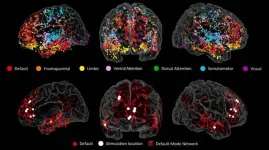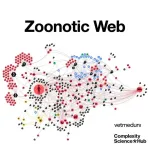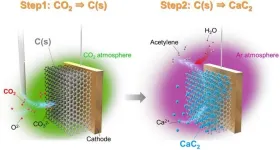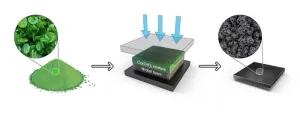(Press-News.org) Editor’s note: This is part of a series of virtual essays from NCSA experts on current topics impacting the field of high-performance computing and research.
NCSA’s Mission in Quantum Computing
By Santiago Núñez-Corrales, NCSA Quantum Lead Research Scientist
The fact that physical laws in our universe contain the recipe to perform computation is nothing short of extraordinary. John Archibald Wheeler described how intricate and intense the relationship is between physics and information in his foundational paper in 1991, one that bears profound consequences for science, technology and even aesthetics. That relationship is so strong that mathematical logic allowed Alan Turing to imagine an abstract computing device for which one can build and operate actual mechanisms using energy and matter. One may very much say that we owe a large share of our contemporary human experience, from supercomputers to the internet, to what Eugene Wigner called the “Unreasonable Effectiveness of Mathematics.”
Quantum computing, first described by Yuri Manin, Paul Benioff, Richard Feynman and David Deutsch in the 1980s as the theoretical possibility of using quantum mechanics to solve quantum mechanical problems faster than with classical computers, takes our extraordinary relationship with computation and information to new heights. From this early work to the burgeoning quantum computing ecosystem of today, a lot has happened. Physicists and engineers have figured out how to build devices that host quantum bits (qubits) and maintain their state long enough to perform preliminary useful work. A whole field – the study of quantum algorithms – has been established to understand which kinds of problems are soluble with these systems and how efficient these solutions may be.
Quantum hardware has morphed from experiments in academic laboratories into products that are either sold as deployable units or can be accessed via the cloud. From big tech industry names to hundreds of new startups, capital investment across government and the private sector has fostered the establishment of a market of around $1.5 billion by 2026 as well as potential economic value in the trillions of dollars by 2035. Behind the maturation of the quantum computing market rests the expectation of greater ability to solve hard problems, problems of the sort that can have major impacts for the economy and some of the grand challenges of our time that remain unreachable with our traditional computing resources.
At the same time, we must constantly remind ourselves that quantum computing is moving from its infancy into a yet-troubled adolescence. As with any advanced technology, it also undergoes the Gartner Hype Cycle and we seem to be squarely in the hype phase. A relatively large variety of classes of hardware platforms whose design is in flux indicates we have not yet arrived at a definitive technology that will become standard. These are still Noisy Intermediate-Scale Quantum devices that produce unreliable results due to their susceptibility to perturbations of various sorts. The fact that quantum devices tend to operate in temperature and vacuum regimes outside usual values found anywhere in the universe is telling of how delicate quantum states are. Fault tolerance remains distant on the horizon, albeit recent advances point in that direction. And there are fundamental questions about how scalable these devices are, and particularly the scalability of entanglement, a key quantum resource.
What we know so far about situations in which quantum algorithms may be effective suggests a small number of problems with large speedups, others with more modest speedups and many where there is no advantage. At a more abstract level, the current state of the art suggests that the classes of problems solvable by classical computers are the same as the classes of problems solved by quantum computers even if the latter have more physical resources than the former, though the mathematical questions behind it need to be better investigated. We still program quantum devices with very low-level languages, either sending pulses or specifying circuits, which is both painstaking and inefficient. Contrast this against the vast landscape of high-level programming languages today, from C to Python and JavaScript, which affords us even the possibility of arguing about which ones we prefer and which ones we dislike.
In short, the state of quantum computing today bears a striking resemblance to that of classical computing in the 1950s. Transistors were still experimentally used in hardware, stored programs had only recently been implemented in repeatable – yet clunky – ways and computer architecture was untrodden land. I wish to suggest that, precisely because of the point we are at in the evolution of quantum computing, the most productive stance is evidence-restrained optimism: both the promises and the difficulties are real, and closing the gap requires a village. And at the University of Illinois, we fortunately have a large one.
Santiago Núñez-Corrales, NCSA Quantum Lead Research Scientist
What should our mission at NCSA be in quantum computing? As our Director Bill Gropp keenly points out, the “A” in NCSA stands for “Applications,” a natural calling to harness advanced computing and scientific software to catalyze discoveries and ultimately enable positive impacts across science and society. Quantum computing fits naturally at the core of it. For the better part of two years, we have crafted a quantum computing vision that is scientifically informed and tempered by the expertise of colleagues in the Illinois Quantum Information Science and Technology Center and fueled by our history of achievements.
As a result, three main targets explain the bulk of recent work at NCSA. The first is to contribute to the advancement of quantum computing platforms toward dependable quantum cyberinfrastructure. Ongoing work toward digital twins for superconducting quantum devices and HPC-QPU integration has allowed us to establish deep and enriching relationships with quantum experimentalists on campus.
The second is to influence the quantum software ecosystem in ways that increase the productivity of developers through creating new high-level quantum programming languages and exploring what a quantum analogue of Message Passing Interface (MPI) may look like to write software transparently across distributed classical-quantum infrastructure in the future.
Finally, our staff has begun gearing up to serve the needs of research scientists seeking new possibilities in quantum technologies while also leading the 1st Workshop on Broadly Accessible Quantum Computing at PEARC24 in July, providing participants with a comprehensive understanding of the current status and the prospects of quantum computing (QC) and its applications, focusing on how it can benefit the broader community interested in integrating quantum technologies into their traditional research computing facilities.
Whatever form the quantum computing revolution takes, NCSA stands ready to contribute.
END
Santiago Núñez-Corrales on ‘NCSA’s Mission in Quantum Computing’
2024-07-15
ELSE PRESS RELEASES FROM THIS DATE:
Study pinpoints origins of creativity in the brain
2024-07-15
Have you ever had the solution for a tough problem suddenly hit you when you’re thinking about something entirely different? Creative thought is a hallmark of humanity, but it’s an ephemeral, almost paradoxical ability, striking unexpectedly when it’s not sought out.
And the neurological source of creativity—what’s going on in our brains when we think outside the box—is similarly elusive.
But now, a research team led by a University of Utah Health researcher and based in Baylor College of Medicine has used a precise method of brain imaging to unveil how different parts of the brain ...
Breakthrough wildlife tracking technology that adheres to fur delivers promising results from trials on wild polar bears
2024-07-15
TORONTO, July 15, 2024 – Studying polar bears just became a lot easier with new “burr on fur” trackers which confirmed scientists’ belief that subadult and adult males spend most of their time on land lazing around, conserving energy until the ice returns.
A multi-institutional research team led by York University and including the University of Alberta, Environment and Climate Change Canada, Manitoba Sustainable Development, Ontario Ministry of Natural Resources and Forestry, and Polar Bears International, used three ...
Study unveils complexity of zoonotic transmission chains
2024-07-15
[Vienna, July 11 2024] — Researchers from the Complexity Science Hub and the University of Veterinary Medicine Vienna have dissected the complex interactions involved in zoonoses, which affect worldwide over two billion people annually. They introduce the concept of a "zoonotic web," a detailed network representation of the relationships between zoonotic agents, their hosts, vectors, food sources, and the environment.
"Zoonotic diseases, which can be transmitted between animals and humans, are a significant public health concern, and our study highlights the importance of a holistic approach to understanding and managing these ...
30-year risk of cardiovascular disease may help inform blood pressure treatment decisions
2024-07-15
Research Highlights:
A comparison of two tools for calculating cardiovascular disease risk found that if only the current 10-year risk thresholds are applied, fewer adults may be recommended for blood pressure-lowering medication. The tools, The American Heart Association’s new PREVENTTM tool and the Pooled Cohort Equations, were applied to a cross-sectional sample of adults from NHANES datasets with stage 1 hypertension who did not report having CVD.
PREVENT can additionally be used to calculate an individual’s 30-year risk ...
Off-the-shelf wearable trackers provide clinically-useful information for patients with heart disease
2024-07-15
Monitoring of heart rate and physical activity using consumer wearable devices was found to have clinical value for comparing the response to two treatments for atrial fibrillation and heart failure.
The study published in Nature Medicine examined if a commercially-available fitness tracker and smartphone could continuously monitor the response to medications, and provide clinical information similar to in-person hospital assessment.
The wearable devices, consisting of a wrist band and connected smartphone, collected a vast amount of data on the response to two different medications prescribed ...
Visualizing addiction: How new research could change the way we fight the opioid epidemic
2024-07-15
New research from a Max Planck Florida Institute for Neuroscience researcher could transform how we understand the way opioids affect the brain. Despite significant discussion surrounding the ongoing opioid crisis, current understanding of how opioids function in the brain is quite limited. This is primarily due to challenges in observing and measuring opioid effects in the brain in real-time. However, a recent technological breakthrough, led by Dr. Lin Tian and her research team and collaborators, recently published in Nature Neuroscience, has overcome these limitations and is set to transform how scientists study opioid signaling ...
Caught in the actinium
2024-07-15
The element actinium was first discovered at the turn of the 20th century, but even now, nearly 125 years later, researchers still don’t have a good grasp on the metal’s chemistry. That’s because actinium is only available in extremely small amounts and working with the radioactive material requires special facilities. But to improve emerging cancer treatments using actinium, researchers will need to better understand how the element binds with other molecules.
In a new study led by the Department of Energy’s Lawrence Berkeley National Laboratory (Berkeley Lab), ...
Out-of-pocket medical costs are substantial and rising for privately insured men with abnormal prostate cancer screening results who require further diagnostic testing
2024-07-15
Prostate-specific antigen (PSA) screening aims to identify men who may harbor potentially lethal prostate cancer, and those with high PSA results often require more extensive (and expensive) diagnostic testing to establish a diagnosis. New research reveals that the out-of-pocket costs for such additional tests are substantial, common, and rising. The findings are published by Wiley online in CANCER, a peer-reviewed journal of the American Cancer Society.
Abnormal screening tests (i.e., elevated PSA) warrant ...
A new method for sustainable synthesis of acetylene from carbon dioxide
2024-07-15
Since its discovery, in 1836, acetylene has emerged as an essential chemical compound in industry, widely used as a chemical building block and fuel. It has applications in the raw material for resins, such as vinyl chloride, welding gas, and illumination. Recent developments aimed at reducing the dependence on petroleum feedstocks have shown that acetylene is a promising platform molecule for producing various base chemicals. Additionally, polyacetylene, a crucial semiconducting material, is made from acetylene. Currently, acetylene is mainly produced through two methods: ...
Localization of anion exchange membrane water electrolysis is a step forward!
2024-07-15
A research team led by Dr. Sung Mook Choi of the Korea Institute of Materials Science, a government-funded research institute under the Ministry of Science and ICT, has developed a one-step electrode fabrication process for the first time in South Korea. This process produces electrodes, a key component of anion exchange membrane water electrolysis, directly from raw materials to a mass-producible level. The team successfully applied this process to a commercial-scale stack of anion exchange membrane water ...





